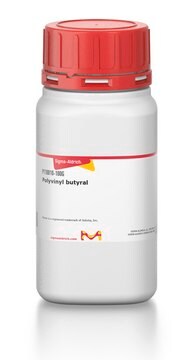GF84317115
Tin
wire reel, 5m, diameter 1.5mm, as drawn, 99.99+%
Sinónimos:
Tin, SN005140
Iniciar sesiónpara Ver la Fijación de precios por contrato y de la organización
About This Item
Fórmula empírica (notación de Hill):
Sn
Número de CAS:
Peso molecular:
118.71
Número MDL:
Código UNSPSC:
12141745
ID de la sustancia en PubChem:
NACRES:
NA.23
Productos recomendados
Ensayo
99.99%
Formulario
wire
fabricante / nombre comercial
Goodfellow 843-171-15
resistividad
11 μΩ-cm, 20°C
L × diám.
5 m × 1.5 mm
bp
2270 °C (lit.)
mp
231.9 °C (lit.)
densidad
7.310 g/mL at 25 °C (lit.)
cadena SMILES
[Sn]
InChI
1S/Sn
Clave InChI
ATJFFYVFTNAWJD-UHFFFAOYSA-N
Categorías relacionadas
Descripción general
For updated SDS information please visit www.goodfellow.com.
Información legal
Product of Goodfellow
Elija entre una de las versiones más recientes:
Certificados de análisis (COA)
Lot/Batch Number
It looks like we've run into a problem, but you can still download Certificates of Analysis from our Documentos section.
Si necesita más asistencia, póngase en contacto con Atención al cliente
¿Ya tiene este producto?
Encuentre la documentación para los productos que ha comprado recientemente en la Biblioteca de documentos.
[Tin in the environment].
Iu P Popov et al.
Gigiena i sanitariia, (9)(9), 55-57 (1983-09-01)
Inorganic tin: chemistry, disposition and role in nuclear medicine diagnostic skeletal imaging agents.
M D Francis et al.
International journal of nuclear medicine and biology, 8(2-3), 145-152 (1981-01-01)
The newer essential trace elements, chromium, tin, nickel, vanadium and silicon.
W Mertz
The Proceedings of the Nutrition Society, 33(3), 307-313 (1974-12-01)
Y Arakawa
Sangyo eiseigaku zasshi = Journal of occupational health, 39(1), 1-20 (1997-01-01)
Tin generates a wide variety of biological activities deriving from its chemical character. In this article, the biological activities of tin compounds are reviewed with a focus on the connection with immunity. The table of contents is as follows: Introduction
K A Winship
Adverse drug reactions and acute poisoning reviews, 7(1), 19-38 (1988-01-01)
Inorganic tin salts are poorly absorbed and rapidly excreted in the faeces; as a result they have a low toxicity. Only about 5 per cent is absorbed from the gastrointestinal tract, widely distributed in the body, then excreted by the
Nuestro equipo de científicos tiene experiencia en todas las áreas de investigación: Ciencias de la vida, Ciencia de los materiales, Síntesis química, Cromatografía, Analítica y muchas otras.
Póngase en contacto con el Servicio técnico





